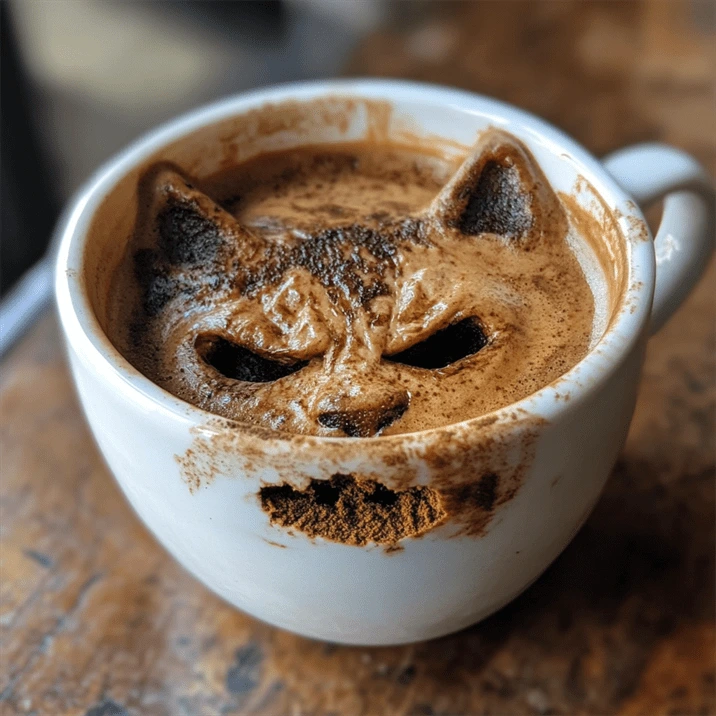Explore the story behind cat poop coffee, known as Kopi Luwak. From
Table of Contents
🌱 What Exactly Is Cat Poop Coffee?
You read that right—cat poop coffee is real. 🐱💩 Known as Kopi Luwak, this rare brew comes from coffee beans that have passed through the digestive system of a small mammal called the Asian palm civet. After eating ripe coffee cherries, the civet digests the fruit pulp, and the beans are excreted whole.
Sounds odd? Maybe. But this unusual fermentation process allegedly enhances flavor, reduces bitterness, and creates a smoother cup.
📝 Caption: From civet belly to barista brew—this is coffee like you’ve never tasted.
📜 Origins of Kopi Luwak: A Colonial Discovery

Kopi Luwak originated in Indonesia during the Dutch colonial era in the 18th century. Native farmers were prohibited from harvesting coffee for personal use, but they noticed civets freely eating the ripe cherries and excreting the beans intact.
They began collecting, washing, and roasting these “recycled” beans. The result?An unexpectedly tasty brew that grew from local lore into an international sensation. 🌍☕
🕰️ Historical Snapshot
| Year | Event |
|---|---|
| 1700s | Dutch introduce coffee cultivation in Indonesia |
| 1800s | Locals discover digested beans from civets |
| Early 2000s | Kopi Luwak enters luxury coffee market |
| Today | Brewed globally, with rising ethical concerns |
📝 Caption: What started as colonial necessity is now a $600-a-pound status symbol.
☕ What Does Cat Poop Coffee Taste Like?
While taste is subjective, many describe Kopi Luwak as having:
- Low acidity
- Smooth mouthfeel
- Notes of caramel, chocolate, and nuts
- A mellow finish
Thanks to the civet’s digestion, fermentation starts before roasting, breaking down proteins that contribute to bitterness. The result is a mild yet complex flavor profile.
🎯 Flavor Profile Table
| Flavor Attribute | Kopi Luwak Description |
|---|---|
| Acidity | Low and mellow |
| Body | Medium to full |
| Flavor Notes | Caramel, cocoa, earthy, musky |
| Aftertaste | Clean, smooth, less bitter |
📝 Caption: It’s not just marketing—some say it’s the smoothest sip on Earth.
💸 Why Is It So Expensive?
Cat poop coffee is among the most expensive coffees in the world, with prices ranging from $100 to $600 per pound. A single cup can cost up to $100 in a luxury café.
💎 Key Factors Behind the Price:
- Rarity: Limited production capacity
- Manual collection: Beans are harvested from civet droppings
- Exotic origin: Marketed as exclusive and adventurous
- Labor-intensive process: From cleaning to roasting
📝 Caption: You’re not just paying for coffee—you’re paying for a story, a process, and a mystery.
🐾 The Ethics of Civet Coffee: A Bitter Truth
Kopi Luwak raises serious animal welfare concerns. While the original practice involved wild civets, modern commercial demand has led to civets being captured and caged, often in poor, inhumane conditions.
🚫 Major Concerns:
- Forced feeding of coffee cherries
- Stress and disease due to confinement
- Reduced life expectancy
- Misleading “wild-sourced” labels
🌱 Tip: If you’re curious to try it, seek out ethically certified, wild-sourced Kopi Luwak from trusted producers.
📝 Caption: Behind that luxury label could be a life in a cage—know before you sip.
🌍 Where Can You Find Cat Poop Coffee?
Despite controversy, cat poop coffee is sold worldwide—both in high-end cafés and online. Here’s where you’re most likely to find it:
| Country | Where to Try |
|---|---|
| Indonesia 🇮🇩 | Bali, Sumatra, Java (local plantations) |
| Japan 🇯🇵 | Premium cafés in Tokyo and Osaka |
| USA 🇺🇸 | Specialty coffee roasters and online shops |
| UK 🇬🇧 | Gourmet coffee retailers and tasting events |
📦 Online Retailers: Look for labels such as “wild-sourced”, “certified humane”, or third-party verifications like UTZ or Rainforest Alliance.
📸 Coffee Culture Meets Curiosity
On platforms like Instagram, YouTube, and TikTok, Kopi Luwak has gone viral, often portrayed as the ultimate “bucket list” coffee experience. 📲
Whether it’s unboxing videos, travel vlogs, or taste-test reactions, cat poop coffee attracts curiosity, conversation, and controversy.
📝 Caption: The Internet loves weird—but are we forgetting the animals behind the camera?
✅ Pros & Cons of Kopi Luwak
| Aspect | Pros | Cons |
|---|---|---|
| Flavor | Smooth, low acid, mild complexity | Some say it’s overrated |
| Price | Status symbol for coffee connoisseurs | Extremely expensive |
| Ethics | Can be humane if wild-sourced | Most are produced in poor conditions |
| Availability | Sold globally online and in high-end shops | Hard to verify source authenticity |
🔍 Final Thoughts: Should You Try It?
Kopi Luwak is part culinary oddity, part cultural treasure, and part ethical dilemma. It’s not just about what you drink, but how it was made.
If you’re a coffee lover with a taste for adventure:
- ✅ Do your research
- 🛑 Avoid farmed kopi luwak
- ♻️ Choose ethically sourced, traceable options
Because the world of specialty coffee isn’t just about flavor—it’s about values too.
📝 Caption: In every sip of Kopi Luwak is a question: Is this indulgence worth the cost?

